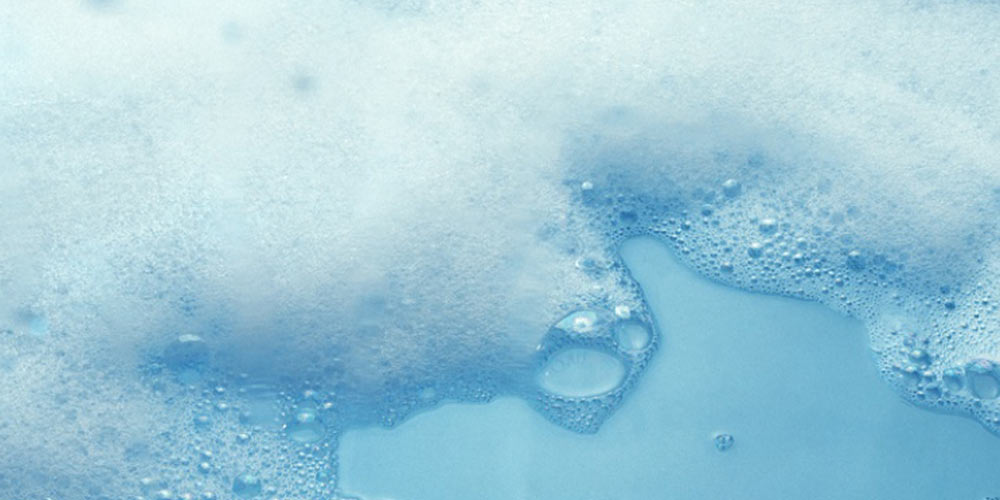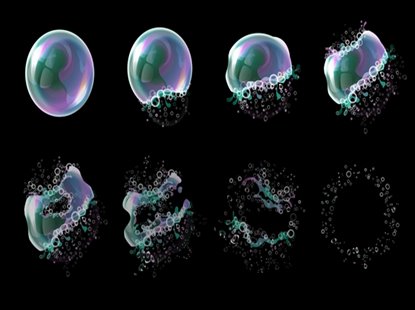Defoamers: Essential Tools for Enhancing Efficiency in Cleaning Products
Defoamers: Essential Tools for Enhancing Efficiency in Cleaning Products
Blog Article
Choosing the Right Defoamer for Your Specific Application Requirements
Selecting the appropriate defoamer for specific application demands is a nuanced procedure that demands careful factor to consider of numerous aspects, such as the foam medium, operating, and kind problems. Recognizing the nuances of defoamer efficiency-- including rate and determination-- while also accounting for regulatory and ecological elements is vital.
Understanding Foam Development
Foam formation takes place when gas is trapped within a fluid, producing a secure framework of bubbles. This phenomenon can significantly influence various commercial processes, specifically in industries such as food manufacturing, pharmaceuticals, and wastewater therapy. The presence of foam can prevent blending, minimize item quality, and also result in operational ineffectiveness.
Foam commonly develops as a result of a combination of factors, including surface-active agents, agitation, and the characteristics of the liquid phase. Surfactants lower the surface area tension of the fluid, facilitating the formation of bubbles that can maintain and coalesce. Frustration, whether from mechanical mixing or gas introduction, improves bubble formation, resulting in boosted foam volume.
Comprehending the technicians of foam formation is important for sectors aiming to optimize their processes. By recognizing the particular problems that advertise foam generation, companies can carry out strategies to alleviate its effects. This knowledge prepares for picking ideal defoaming agents that successfully target the special difficulties presented by foam in different applications. As a result, an extensive understanding of foam development is essential for enhancing efficiency and maintaining item stability throughout different fields.
Sorts Of Defoamers Available
Different types of defoamers are offered to address the difficulties postured by foam in industrial applications. defoamers. Extensively identified, defoamers fall under 3 categories: silicone-based, non-silicone-based, and all-natural defoamers
Silicone-based defoamers are renowned for their performance and stability across a variety of temperature levels and pH degrees. They are usually made use of in applications where strong foam reductions is essential, such as in coverings, paints, and adhesives. Their low surface area stress enables quick foam collapse.
Non-silicone-based defoamers, often made from natural compounds, supply an alternative for applications conscious silicone deposits. These defoamers can be further divided into polyether and ester types, each customized to fulfill details solution requirements. Non-silicone defoamers are frequently made use of in food processing and individual care products due to their compatibility with various formulations.
Natural defoamers, originated from plant or pet resources, are getting grip because of their eco-friendly profile. These items are specifically appealing in applications where governing conformity and sustainability are vital, such as in agrochemicals and biotechnology.
Selecting the ideal kind of defoamer is vital for enhancing efficiency and guaranteeing compatibility with particular applications.
Key Application Considerations
When picking a defoamer, it is important to take into consideration the details application demands to guarantee optimal efficiency. defoamers. Various industries have distinct demands, such as food handling, pharmaceuticals, or wastewater therapy, and each application might require unique see this page defoaming homes
Key variables to examine include the tool in which the defoamer will certainly be used, whether it is water-based, oil-based, or a mix thereof. The temperature level and pH levels of the application can also greatly affect the effectiveness of a defoamer. In addition, compatibility with other chemicals present in the system is crucial to protect against negative reactions that can jeopardize performance.
Another vital consideration is the frothing behavior of the details system. Comprehending whether the foam forms swiftly or slowly can assist the selection of a defoamer that targets the source efficiently. The wanted speed of defoaming can affect the selection, as some applications require fast activity while others may tolerate slower defoaming procedures.
Lastly, regulative and ecological considerations need to not be neglected, specifically in industries with stringent compliance demands. Picking a defoamer that aligns with these aspects makes sure both efficiency and security in the application.

Efficiency Screening Approaches
Evaluating the performance of a defoamer calls for an organized technique to screening that precisely determines its effectiveness in specific applications. Numerous performance testing approaches can be utilized to determine the optimal defoamer for a provided solution.
One common approach is the bubble examination, which evaluates the defoamer's capability to decrease foam volume with time. This examination involves creating a steady foam and after that including the defoamer to observe the rate of foam collapse. An additional technique is the dynamic foam examination, where foam is generated under regulated conditions to simulate real-world application circumstances. This strategy gives insights right into exactly how the defoamer performs under differing shear conditions.

Eventually, selecting the suitable performance testing technique relies on the specific application and the kind of foam being attended to. Each technique uses useful information that can assist formula modifications and improve the efficiency of the defoamer in functional applications.
Finest Practices for Selection


Following, think about the defoamer's performance in regards to rate of activity and determination. A quick-acting defoamer might be needed for procedures where fast foam reductions check here is important, while an extra relentless formula may be needed for extended foam control. Additionally, assess the environmental impact of the defoamer, including its biodegradability and any kind of governing conformity demands.
Conduct trials with picked defoamers to identify their efficiency in real-world problems. By adhering to these ideal methods, you can boost foam control effectiveness and guarantee see it here the long life of your processes.
Verdict
In summary, picking the appropriate defoamer requires a thorough evaluation of numerous elements, consisting of foam type, medium, operating problems, and environmental factors to consider. Recognizing the unique qualities of foam development and the offered defoamer alternatives is essential.
Picking the appropriate defoamer for particular application demands is a nuanced process that demands mindful factor to consider of numerous aspects, such as the foam kind, tool, and operating conditions.Choosing the right defoamer is vital for achieving ideal performance in foam control applications. A quick-acting defoamer may be necessary for processes where quick foam reductions is important, while a much more consistent formula might be required for long term foam control.In recap, selecting the appropriate defoamer demands a thorough analysis of various factors, consisting of foam kind, medium, operating problems, and ecological considerations. Understanding the unique features of foam development and the available defoamer alternatives is critical.
Report this page